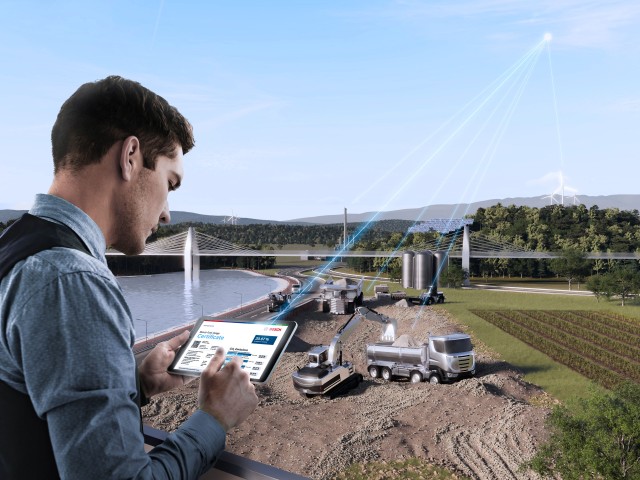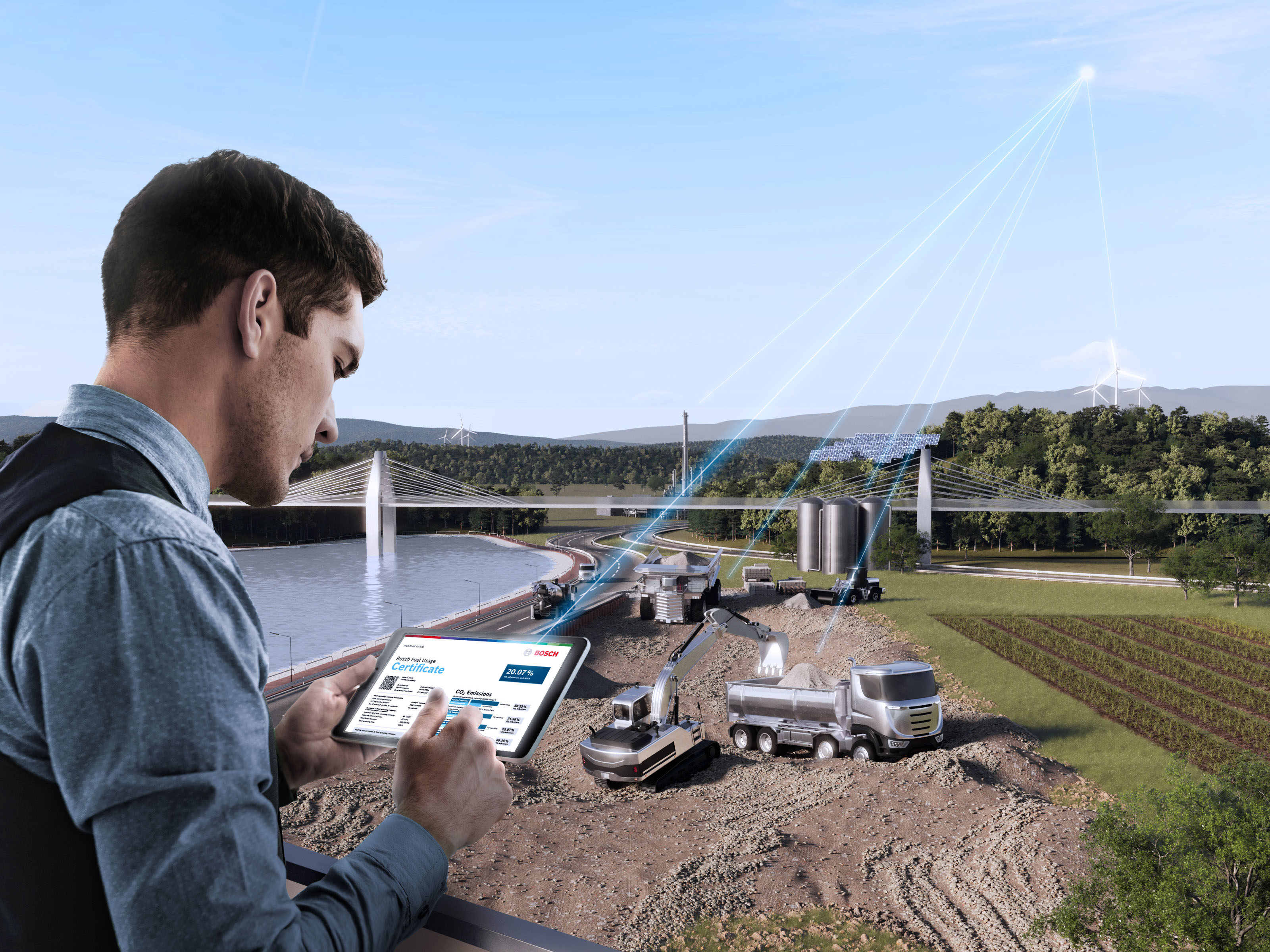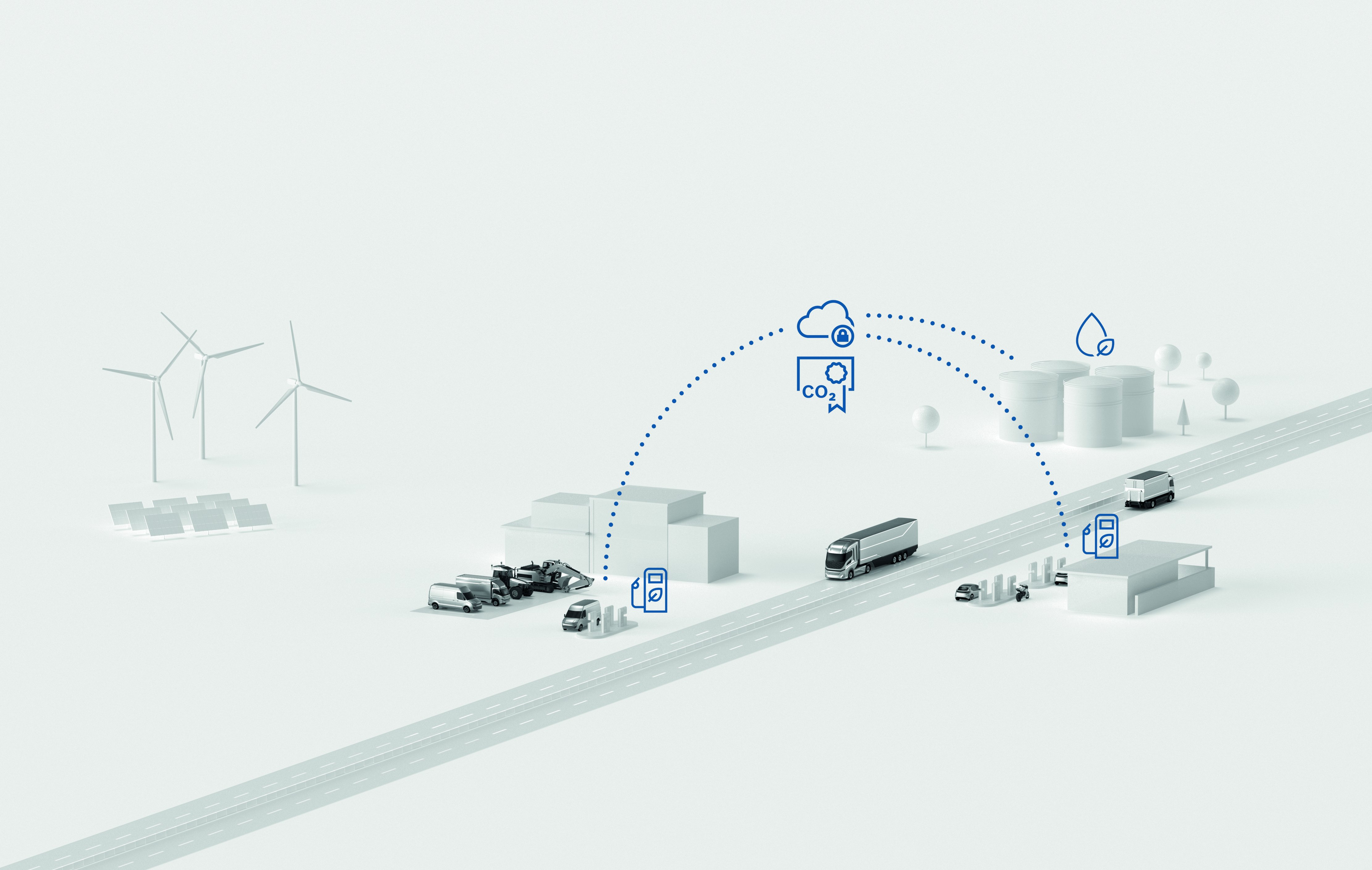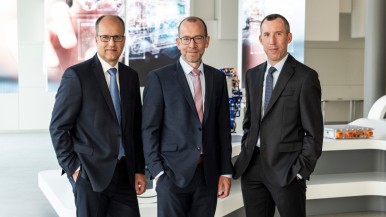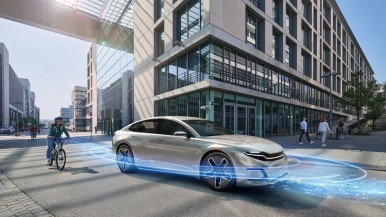Stuttgart, Germany – Vehicle fleets are a driver of carbon dioxide emissions, particularly for freight forwarders and transport companies. Opting to use renewable synthetic fuels can greatly reduce their carbon footprint – but documenting this, say for sustainability reports, is a challenge. That’s precisely where Bosch’s Digital Fuel Twin comes in: this software solution, integrated into the vehicle, records the use of climate-friendly fuels and documents the reduced carbon emissions. “Bosch’s Digital Fuel Twin makes it easy for companies to prove that they’re using renewable synthetic fuels,” says Thomas Pauer, the president of Bosch’s Power Solutions division. “It gives them auditable proof of the quantities and the carbon footprint of the fuel used per vehicle, which they can then use in their reporting.” In this way, companies not only comply with ever increasing reporting obligations, but can also document their environmental awareness. The Digital Fuel Twin is currently being used on the Tour d’Europe for the first time, which will also stop off at Bosch in Feuerbach on May 28. This rally to Brussels will see a fleet of cars and trucks with combustion engines refueling exclusively with renewable synthetic fuels at public filling stations as they make their way across Europe.
Contact person for press inquiries:
Anna Schmatz
Phone: +49 711 811 12715
E-mail: anna.schmatz@de.bosch.com
Mobility is the largest Bosch Group business sector. It generated sales of 55.8 billion euros in 2024, and thus contributed around 62 percent of total sales. This makes the Bosch Group one of the leading mobility suppliers. Bosch Mobility pursues a vision of mobility that is safe, sustainable, and exciting. For its customers, the outcome is integrated mobility solutions. The business sector’s main areas of activity are electrification, software and services, semiconductors and sensors, vehicle computers, advanced driver assistance systems, systems for vehicle dynamics control, repair-shop concepts, as well as technology and services for the automotive aftermarket and fleets. Bosch is synonymous with important automotive innovations, such as electronic engine management, the ESP anti-skid system, and common-rail diesel technology.
The Bosch Group is a leading global supplier of technology and services. It employs roughly 418,000 associates worldwide (as of December 31, 2024). The company generated sales of 90.3 billion euros in 2024. Its operations are divided into four business sectors: Mobility, Industrial Technology, Consumer Goods, and Energy and Building Technology. With its business activities, the company aims to use technology to help shape universal trends such as automation, electrification, digitalization, connectivity, and an orientation to sustainability. In this context, Bosch’s broad diversification across regions and industries strengthens its innovativeness and robustness. Bosch uses its proven expertise in sensor technology, software, and services to offer customers cross-domain solutions from a single source. It also applies its expertise in connectivity and artificial intelligence in order to develop and manufacture user-friendly, sustainable products. With technology that is “Invented for life,” Bosch wants to help improve quality of life and conserve natural resources. The Bosch Group comprises Robert Bosch GmbH and its roughly 490 subsidiary and regional companies in over 60 countries. Including sales and service partners, Bosch’s global manufacturing, engineering, and sales network covers nearly every country in the world. Bosch’s innovative strength is key to the company’s further development. At 136 locations across the globe, Bosch employs some 87,000 associates in research and development.
Additional information is available online at www.bosch.com, www.bosch-press.com.
